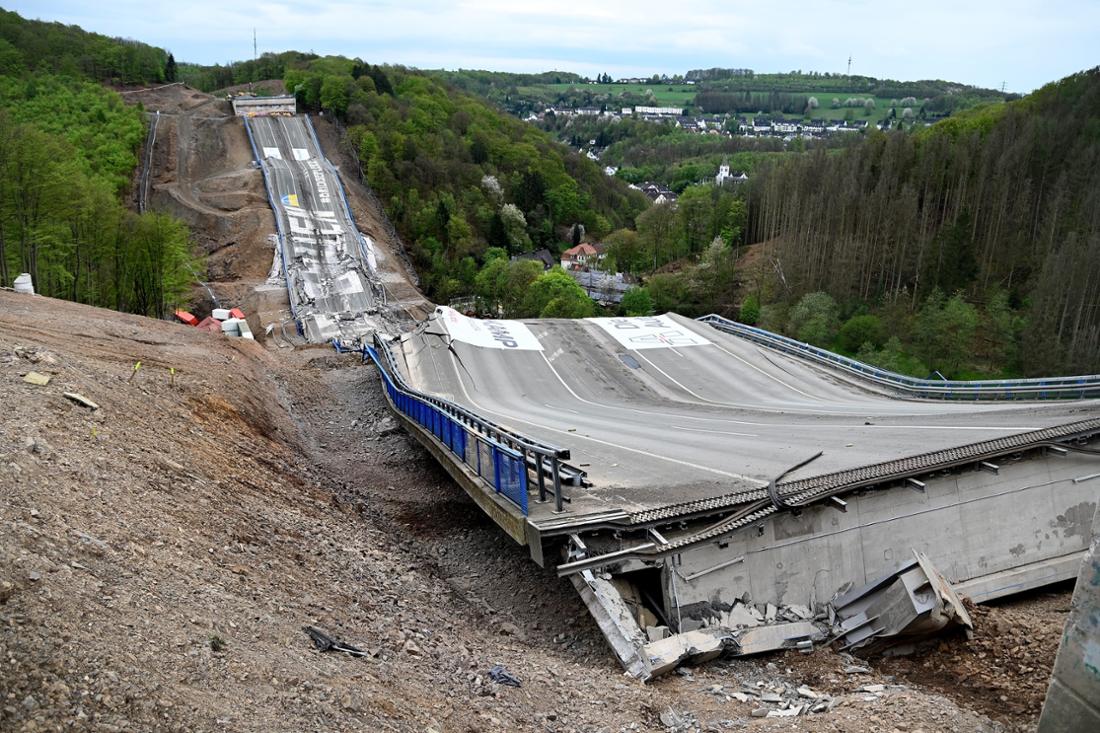Was there an earthquake when the Rahmede viaduct fell? Onlookers felt the ground shaking. I guess it wasn’t my imagination.
Lüdenscheid – The pressure wave that pushed through the Rahmedetal after the blasting of the viaduct could still be clearly felt hundreds of meters away. It felt like a gust of wind that reached the audience with a significant time lag and came as a bit of a surprise.
After the blasting signal “Three, two, one, ignition” sounded at 12 o’clock sharp by explosives expert Michael Schneider, loud bangs were initially heard like fireworks, the explosions could be seen on the pillars. When the 17,000 tons of the Rahmede viaduct fell down into the fall bed as planned and hit with a loud bang, some onlookers in the area said they had also noticed vibrations in the ground.
Was there an earthquake? Measuring stations register the blasting of the A45 viaduct
“It’s quite possible, after all, this is a near-surface tremor that was triggered by the blast and the impact of the bridge. It depends on how much energy is released, whether you perceive it,” says Jens Zeiss, graduate geophysicist at the Geological Survey of North Rhine-Westphalia. Actually, the perception threshold for earthquakes is a magnitude of 2.5, but this applies to earthquakes, which usually occur at great depths. “At close range, if there is a tremor on the surface, you can also feel magnitudes well below 2.5”. The NRW Geological Service measured a magnitude of 1.2 for the blasting of the Rahmede viaduct.
For our editorial team, Zeiss evaluated the measurement data on the blasting date on Sunday, May 7, at 12 noon. And indeed: the blasting of the Rahmede viaduct triggered a slight earthquake that was registered far away from the earthquake measuring stations. “We can still see signals 100 kilometers away if we know that the blast took place,” says Zeiss.
Blow up of the Rahmede viaduct: Seismograms show vibrations
“We saw the blast quite well in our measurement network. A surface wave was excited, which was recorded from all measuring points in the vicinity,” explains the graduate geophysicist. The closer the measuring stations are to the epicenter in Lüdenscheid, the more clearly the vibrations from the collapsing viaduct can be seen, as the seismograms of the individual measuring stations show.

The nearest measuring station to the Rahmedetalbrücke is the Ennepetalsperre in Breckerfeld at a distance of 15 kilometers. Here the seismic wave arrived about seven seconds after the blast and shows the highest peak. At the Sorpesee measuring station (about 27 kilometers away), the waves were flatter, but still clearly visible after ten to 15 seconds. The seismic wave arrived at the Essen measuring station Hespertal (42 kilometers away) after 22 seconds.
The strongest tremor in the Märkisch district to date has been documented from Hemer. On November 22, 2008, an earthquake with a magnitude of 2.9 was registered here. An earthquake in Roermond, Netherlands, at a depth of 18 kilometers was the most severe earthquake in all of North Rhine-Westphalia. It had a magnitude of 5.9. More than 30 people were injured in the Rhineland at the time, and damaged houses had to be demolished in the Heinsberg district. As a result, the earthquake control network in the Rhenish Bight was expanded.
“The Sauerland is largely outside of earthquake zones. The risk of earthquakes is low here. So far, no major earthquakes have been measured in the Sauerland region,” the geological service reported a few months ago. after earthquakes with a magnitude of 1.8 were measured at a depth of five kilometers in Meinerzhagen.

